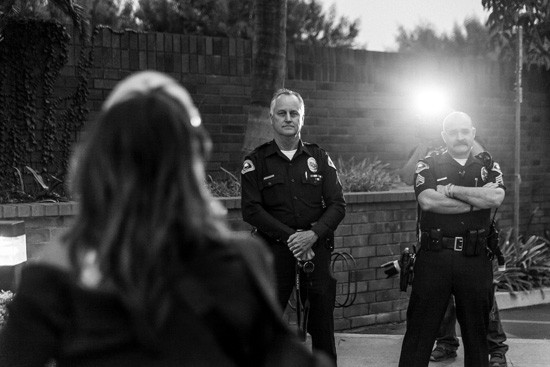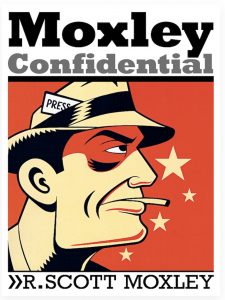
With a major, cold-case homicide of a law-enforcement officer unsolved and one of the accused killers awaiting trial in February 2013, Anaheim Police Department (APD) Sergeant Elizabeth Faria would have had you believe she purposefully but innocently destroyed interrogation recordings of Rafael Miranda, who says APD beat a false confession out of him.
Faria’s explanation is golly-gee simple: APD has an annual budget in the tens of millions of dollars, but there’s purportedly a dire shortage of computer hard-drive space. She wanted to free up storage for future files, and nobody internally protested, so–allegedly without even a cursory review to see what evidence she was permanently deleting from a computer devoted to murders–Faria hit the delete button.
Her move erased four hours of APD Sergeant Daron Wyatt’s controversial, videotaped, February 2012 interrogations of Miranda regarding the ambush robbery/killing of Elizabeth Begaren, a California prison guard, on a 91 freeway on-ramp in 1998.
Afterward, we are supposed to believe, came the oh-gee-whiz-darn explanation to Mark Eisenberg, Miranda’s Irvine-based attorney, who’d filed a police-brutality lawsuit against Wyatt four months before Faria destroyed the most critical piece of evidence in the dispute. Miranda sat in lockup for 111 days, facing capital murder charges, but he was released on May 24, 2012, when authorities acknowledged he was innocent.
This week inside Orange County’s Ronald Reagan Federal Courthouse, assistant Anaheim city attorney Moses W. Johnson IV shrugged his shoulders and told U.S. District Court Judge James V. Selna the file destruction wasn’t nefarious. “It was inadvertent,” Johnson said. “People are human. This was just a simple mistake.”
Eisenberg noted that Wyatt had a motive for the video to disappear if he is guilty of beating his client; alternatively, he had motive to preserve the evidence if it proves his innocence.
“This [erasure} was done by design,” he said, asking Selna to give jurors at the upcoming trial an adverse inference instruction that they can view the evidence destruction as consciousness of guilt.
“I hope we don’t go there,” said Johnson, who added that Wyatt did manage to keep audio files of the interrogations and downplays that Miranda can be heard crying out at several points during the sessions. He has been urging the judge to keep jurors in the dark about Faria’s deed, and he may get his way.
Selna told Eisenberg that his reasoning wasn’t persuasive and announced he doesn’t have a single suspicion about Faria’s tale. “I found nothing wrong with what she did,” he said. “I won’t let the plaintiff establish [during the scheduled March 24 launch of the trial] any wrongdoing by Faria,” who now works as a $175,502-a-year investigator for Orange County District Attorney Tony Rackauckas.
Wyatt also denies any culpability. In a December 2014 deposition, he claimed he wasn’t involved in the erasure and forgot to follow the standard practice of making two CD copies of the hard-drive footage. One copy was to be booked into evidence, while a second was supposed to be delivered to Larry Yellin, the prosecutor on the case. The detective says he didn’t discover his failures until it was too late.
“I thought I had transferred it,” he testified.
Or was the line misinformation?
In his October 2013 Orange County Register article, Tony Saavedra reported that Yellin, who supposedly never got a copy of the footage, asserted to him that the video evidence shows “no such beatings” were used to obtain the false murder confession.
That’s not the only twist. Wyatt also told Eisenberg the Miranda case was the only time in his career when recorded evidence had been destroyed, a point Johnson used to sway Selna about the innocence of the predicament. But the assertion is wrong. Unbeknownst to Eisenberg or the federal judge, Faria and Wyatt used the “accidentally deleted tape” excuse in an earlier homicide investigation.
OC Weekly has obtained a July 2011 internal APD report in an unrelated homicide case that describes how Faria and Wyatt conducted an April 2011 interview with Mark Cleveland, an Orange County Jail informant. “The interview with Cleveland was digitally recorded,” Faria wrote in her report. “After the completion of the interview, Wyatt and I returned to APD, where I downloaded the recorded interview. Unfortunately, once the recording was downloaded, it was deleted and irretrievable.”
Johnson declined interview requests for Faria and Wyatt.

The Begaren case is steeped in questionable law-enforcement moves. To help secure a conviction against Nuzzio Begaren, the victim’s husband, Wyatt and Yellin employed Raymond Cuevas, a two-faced, Mexican Mafia killer and prolific paid informant for authorities in Los Angeles and Orange counties. (See “Meet OC & LA Law Enforcement’s Favorite Rats,” Sept. 10, 2014). With the aid of Sheriff Sandra Hutchens’ deputies on May 23, 2012, Wyatt placed Cuevas in a protective-custody cell next to Rudy Duran, an inmate at California Correctional Institution at Tehachapi who’d been bused in for questioning.
In flagrant violation of well-established federal law backed by the U.S. Supreme Court, Cuevas–acting as a secret government agent–coerced a confession from Duran by threatening his lack of cooperation would result in his murder by the Mexican Mafia. The impermissible trickery worked. Cases proceeded against Nuzzio Begaren, Duran and a third alleged participant in the contract killing. But recordings of the Cuevas-Duran chats were withheld from defense lawyers while convictions were secured.
It took the digging of Assistant Public Defender Scott Sanders, who represents two death penalty clients ensnarled in the ongoing jailhouse-informant scandal, to force prosecutors into reluctant admissions about keeping the recordings, as well as Wyatt’s official report of the arranged jailhouse rendezvous, a tightly guarded government secret. Yellin, who is not a fan of Sanders’ work because he says it wrongly assumes conspiracies, told me the Begaren case exemplifies superb policing and says he doesn’t think the withheld evidence would have helped the defense anyway. But, he conceded, the secrecy didn’t conform to court rules on discovery.
“It is a discovery violation for not giving it up,” the senior deputy district attorney said. “But it’s not a Brady violation. In hindsight, maybe I should have gone to court [and told the judge about the existence of the recordings].”
(In Brady v. Maryland, a 1963 Supreme Court case, the high court ruled that the U.S. Constitution requires prosecution teams to surrender, without prompting, all evidence that might be favorable to a defendant; state law additionally requires prosecutors to turn over all statements of a defendant, as well as the statements of witnesses the government intends to call at trial.)
Yellin says his paramount reason for keeping everyone clueless about Cuevas’ role was so that the thug wouldn’t be targeted for killing by the Mexican Mafia, a sentiment that left the prosecutor with a firm stance. “No way was the defense getting [the recordings] at that time [the outset of the case]. . . . The Mexican Mafia was putting up YouTube videos with rap songs about killing snitches,” he said.
To Sanders, destroyed and withheld evidence in major cases signify an Orange County criminal-justice system in dire need of reform. “A prosecutor and his lead police investigator decided they would hide evidence damaging to their case and to the credibility of key witnesses,” he said. “They then took steps to carry out their plan. That is the very definition of a conspiracy.”
To see last week’s related column, go HERE.
[UPDATE: April 1, 2015: A federal jury sided with Wyatt in Selna’s courtroom.]

CNN-featured investigative reporter R. Scott Moxley has won Journalist of the Year honors at the Los Angeles Press Club; been named Distinguished Journalist of the Year by the LA Society of Professional Journalists; obtained one of the last exclusive prison interviews with Charles Manson disciple Susan Atkins; won inclusion in Jeffrey Toobin’s The Best American Crime Reporting for his coverage of a white supremacist’s senseless murder of a beloved Vietnamese refugee; launched multi-year probes that resulted in the FBI arrests and convictions of the top three ranking members of the Orange County Sheriff’s Department; and gained praise from New York Times Magazine writers for his “herculean job” exposing entrenched Southern California law enforcement corruption.

